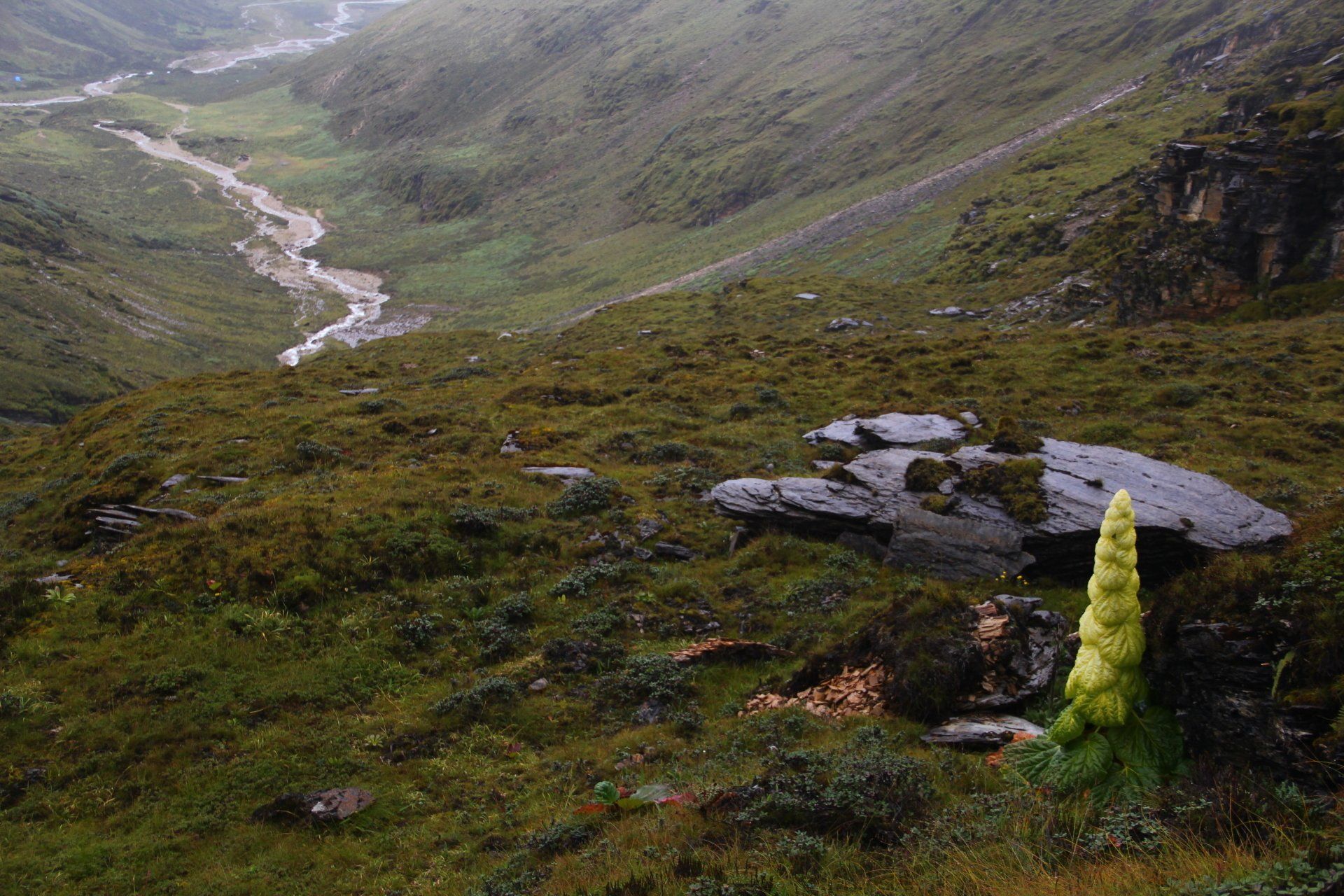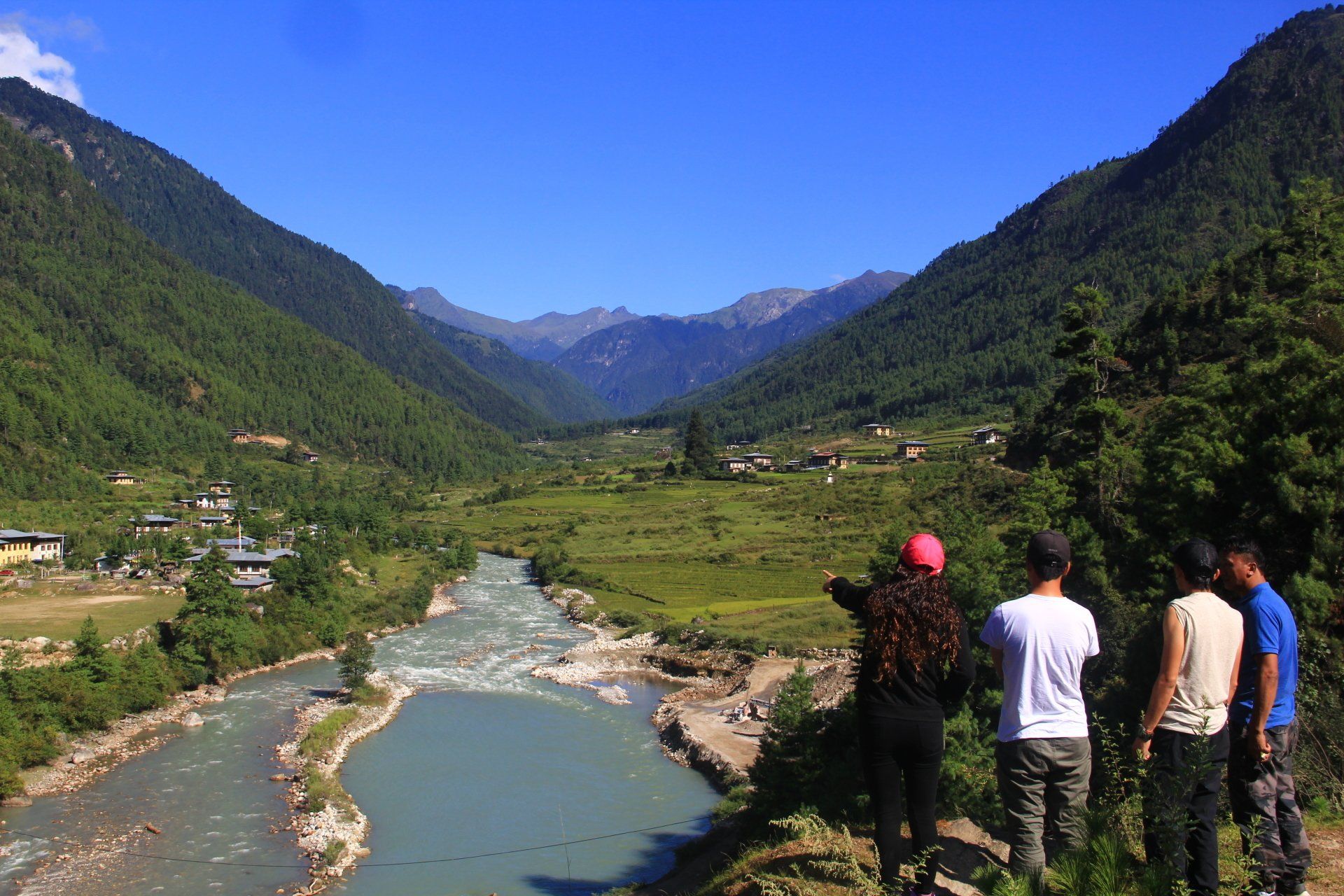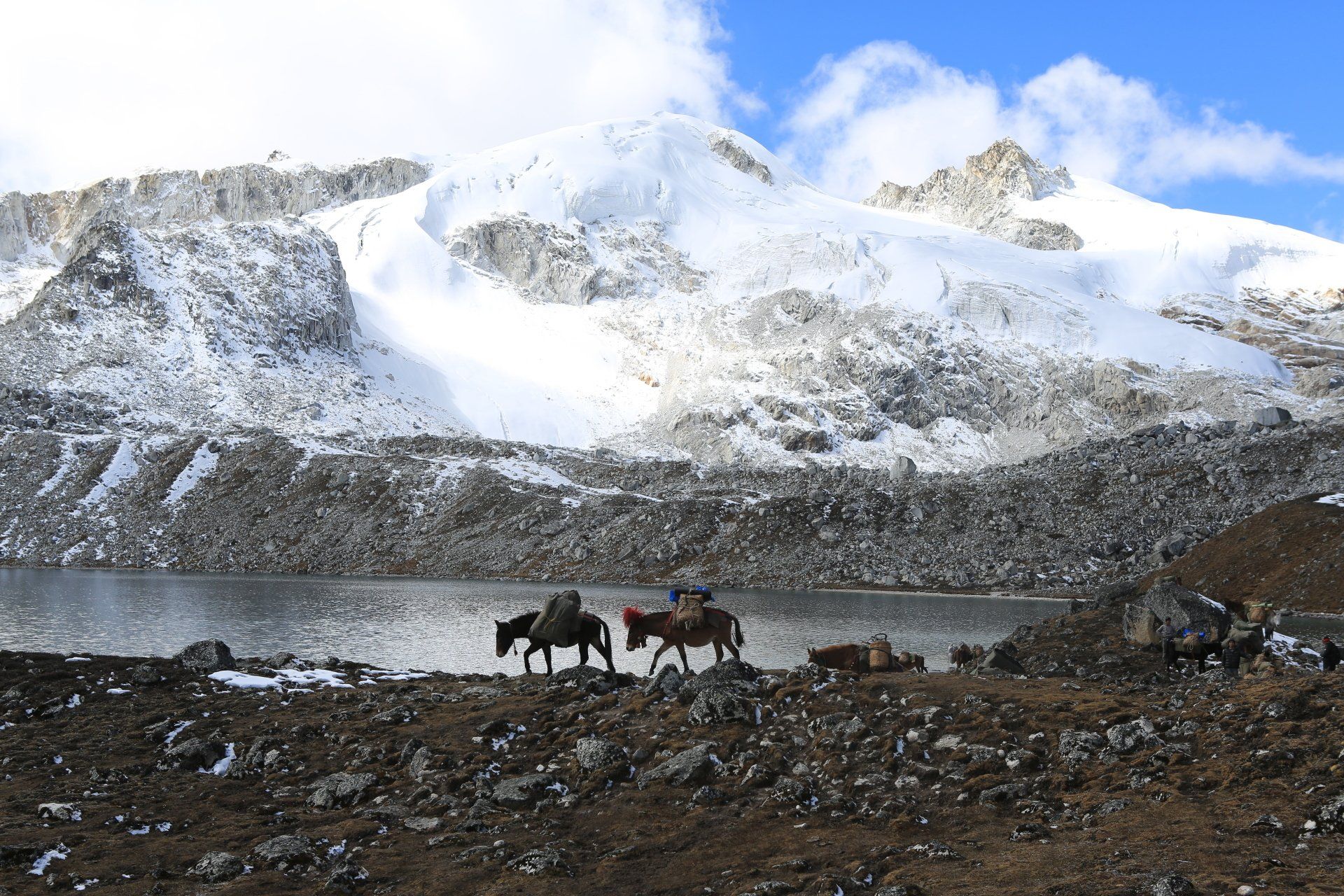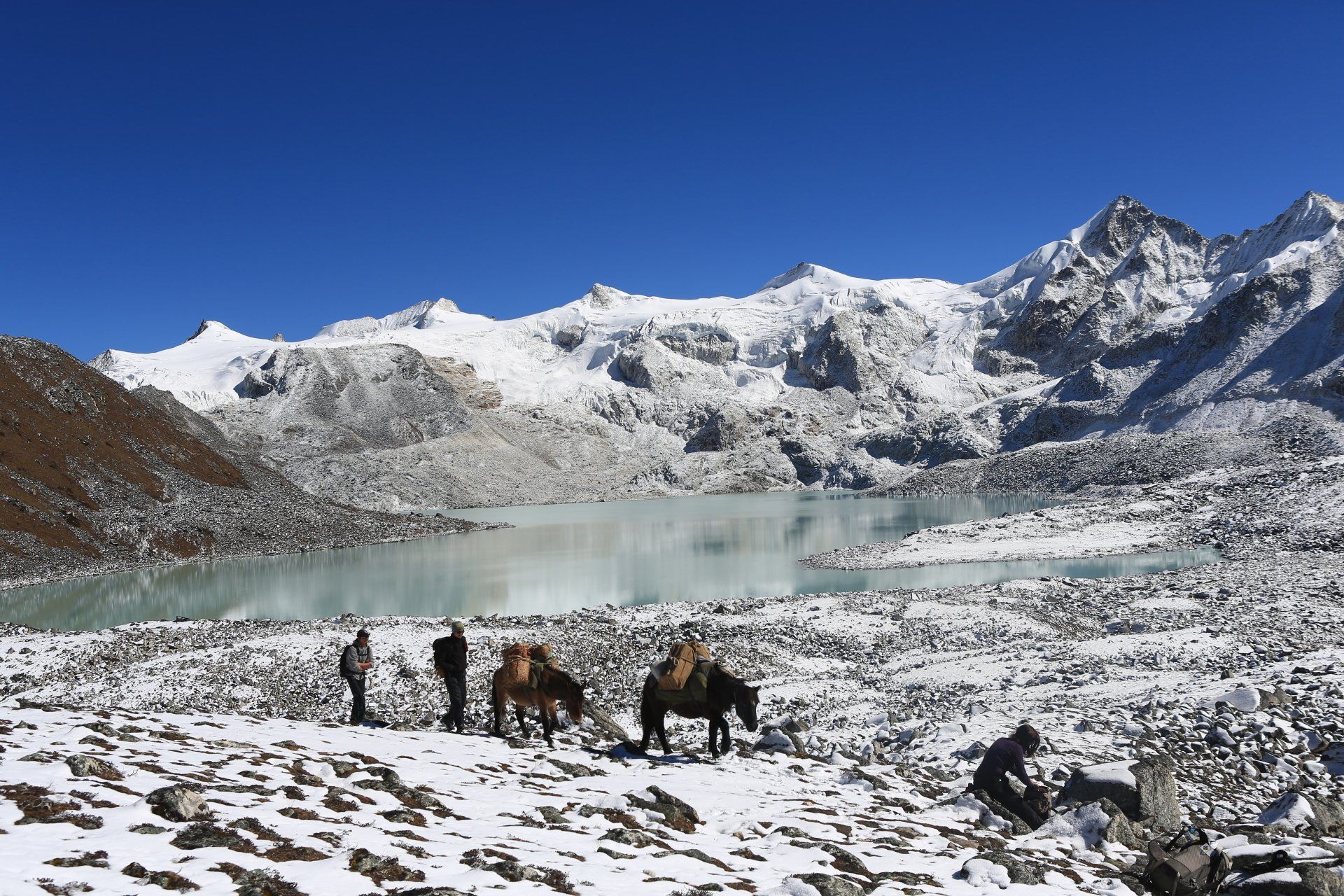Trek with Marmots
A branch of Jumolhari Combo Trek with Slight Difference
#BookNowTravelLater
Got Your Tour Cancelled Because of COVID 19
Cost
3,350.00
USD NOW 3,100
only
Grab the Seat with USD 300 Deposit only
Trek With Marmots - The Shorter But Almost Similar Version of Combo Trek
The Best of Popular Bhutan Trekking Trails combined into one giant Adventure:
1. Mt. Jumolhari Trek,
2. Naro Trek,
3. Yaktsa Trek and
4. Druk Path Trek
The routes are least trodden so there are hardly any tourists and while this is a challenging Trek, it is also all the more spectacular with magnificent views of the Snow Capped Himalayas and the best yet amongst all the trekking trails of Bhutan.
Trek Facts...
Combination of 4 Popular Treks
Jumolhari – Laya – Druk Path and Naro Trek- Combination of the four most popular treks
Hike to Tiger's Nest Monastery
Tiger’s Nest/Taktsang Monastery- Hanging onto a precarious almost vertical mountain cliff, it’s a spectacular sight in terms of location, setting and history and is one of the holiest sites in the Buddhist arena.
Excursion of Thimphu Valleys
The Trekking Package also includes excursion of Thimphu valley- Combination of ancient and modern
Accompanied by Travel Guide
Throughout your holiday to Bhutan, escorted by one of the Bhutan Swallowtail’s expert tour guide- your ‘travelling concierge’, expert guide, consummate facilitator and friend in a foreign land who ensures your journey is as enjoyable as possible.
Baggage Handling
Baggage handling everywhere on your tour
Transport
Enjoy the unique comfort of Bhutan Swallowtail’s Luxury air conditioned SUV and coach with extended leg room.
Pre - Departure Checklist
Camping in extreme weather such as cold temperatures and snowy conditions can be expected and extremely enjoyable; Camping on the snow can be peaceful, picturesque and an out door adventure.
All the accommodation while on Trek is twin sharing, double occupancy. Single occupancy in tents can be arranged on demand at an additional charge. All tents are Cold Weather Tents and designed for harsh weather and snowy conditions. Separate tents will be pitched for dinning, kitchen and rest room.
- Trekking Boots (broken in)
- Waterproof 3/4 season jacket and trousers
- Camp Footwear (light shoes/sandles/trainers)
- Several pairs of good quality socks
- T-Shirts - Highly recommended are synthetic T shirt styles that wick away moisture
- Thermal Underwear / layers
- Down jackets
- Warm mid layers (fleece/micro fibre)
- Trousers - Lightweight, loose fitting, trekking trousers, pants with zip-off bottoms
- Shorts
- Gaiters
- Tracksuit or fleece pants for evenings
- Sleeveless fleece and extra layers
- Warm Hat and sun Hat
- Scarf/neck warmer
- Gloves and Mitts - waterproof and warm
- Sunglasses with UV protection
- Head Torch (spare batteries)
- Sunscreen and Lip Balm
- Light weight towel
- Hand sanitizer gel
- Trail mix / nuts/ muesli bars
- Whistle
- Daypack - The daypack you select must have the capacity for the items you may be carrying on a day's walk: rain jacket, trousers, warm clothing, water bottle, camera equipment, washing items and other personal effects. A hip/waist strap provides additional comfort. You should consider daypacks of at least a 30 to 40-litre capacity. Horses will be carrying the rest of your luggage.
Whats Included?
- SUV Car and Coaches
- Horses and Yaks on the Trek
Trekking Leader, Trekking Chef, Certified Guide, Helpers...
A marmot here, a yak there, a herd of blue sheep here, a mountain lake below, an exotic flower here, a swift-flowing stream there, a bridge here and a mountain ridge beyond that. This is the pattern of the eight-days trek that took a group of us across the vast wilderness with altitude that stretched between 2,100 metres and 5,200 metres above sea level.
The Jomolhari Combo trek is all about exploring the Jigme Dorji Wangchuk National Park, the second largest National Park of Bhutan covering an area of 4,316 square kilometres with an altitude range of 1,200 metres in the south to 7,314 metres in the north. The park is home to numerous species of animals many of which are endangered or extinct in other parts of the world. They include the Royal Bengal Tiger, Snow Leopard, Takin, Blue Sheep (Pseudouis Nayaur), Musk Deer (Moshcus Chrysogaster), Himalayan Black Bear, Marmot (Marmota Himalayana), Red Panda (Ailurus Fulgens) and several species of pheasants. More than 300 species of medicinal plants can be found in the park.
The trek that spans the entire Jigme Dorji Wangchuck National Park in northern Bhutan took us across 26 bridges, 12 lakes, and six mountain passes. But the trek has a thousand-fold more to offer than just the mere numbers. The virgin wilderness stretches far and wide, ultimately tapering off into frozen peaks rising into the sky. One could see at least six mountain summits from the route. It all seems formidable and unconquerable but when the will to explore takes hold of the human spirit, the two little legs can take one beyond the horizon.
The Trek starts with the Yaktsa Trek Trail in Paro valley, diverting towards the regular Jomolhari Trek, following the Naro Trek and finally merging with the Druk Path Trek that ends at Thimphu.
What is the Good Season for this Bhutan Trekking?
Bhutan is located in the upper interior part of the Himalayas with mountains as high as 7800 m above sea level. This adventure involves trekking on the ridge of rising mountains to these high Himalayas, and mostly the trail is between 3800 – 5200 m above sea level and the campsites are between 3800 – 4280 m. It will be extremely cold in winter and moderately cold in summer. Therefore this Trek is good for the month of April, May, September, Oct and November, moderately good for the month of March and August. Due to extreme cold and the frozen ice in winter it’s not good for the month of January, February and December and also not advisable for the month of June and July due to rain and bad weather.
Where to Stay While Trekking?
A dedicated team lead by the trekking leader, certified chef, horseman with horses and enough helpers to ensure a comfortable trekking experience, will accompany you through out the trek.
Normally, it takes about 6-7 hours of walk between the camps and you will usually reach your campsite around 4 – 5 o clock in the evening. 2 times tea and snacks will be served on the way, in the morning and after noon with hot lunch at some good location, most of the time with spectacular views of the Himalayas. A hot tea or porridge will await you at the campsite. Hot water bags, hot meals and comfortable mattresses will also be waiting for you in your A – shaped sleeping tent with good quality sleeping bags.
A separate toilet tent will be pitched nearby at a dedicated location and, on demand shower tents can also be provided at a small additional cost.
The trekking leader will brief you every morning about the next day’s schedule.
Itinerary
Book This Trip With Confidence
Only USD 200 to Book This Trip
To secure a booking, only USD 300 as deposit is required
Guaranteed VISA
Bhutan Tourist VISA once you have made the deposit is 100% Guaranteed with us.
Flexi Deposit
You can gift your deposit to someone else or buy a new trip with us for FREE
24/7 Live Support
We have a dedicated team working 24/7 and can be reached by call, WhatsApp, Messenger and Email
No Booking Fees, No Change Fees
Change your Travel Dates Or Book your New Trip for Free
Your Deposit is Protected
Its protected by the Royal Government of Bhutan (RGOB) and Tourism Council of Bhutan (TCB)
Meet Your Trekking Expert
Sonam Dendup is currently the Managing Partner of Bhutan Swallowtail and loves trekking in the Himalayas. He trekked almost all the trek in Bhutan and also the Annapurna Base Camp and Mount Everest Base Camp trek in Nepal. He has 9 years of trekking experience and as a tour leader.
Other Popular Trekking Adventure in Bhutan...
Not Happy? Check Our Other Related Bhutan Tours and Treks...
What You Should Know Before You Go Trekking in Bhutan?

In the general, the climate in Bhutan is quite unpredictable due to the variation in the elevation and changing seasons. The southern foothills have a sub tropical climate with hot and humid monsoons, warm and pleasant winters. The central and higher alpine valleys have temperate weather, with pleasant summers and cold winters. The northern region of the country is above the tree line and most of the high mountain passes are covered in snow throughout the year. Bhutan enjoys all the four seasons in a year and Spring (March – May) and Autumn (September – November) are the best times to visit Bhutan. If you wish to see the rhododendron and wild flowers in full bloom in the central valleys which is a total delight then spring is the best time to visit and also trek. Autumn is the best time for trekking as the skies are clear and less chances of rain and snow. During winter (mid-November-February) the temperatures fall down but luckily the sky remains to be an azure delight which elevates the sight of the snow capped mountains to a new level. This table shows you the most suitable times for trekking in Bhutan: Good: (***) Moderate: (*) Not good: (X) Down Load File





